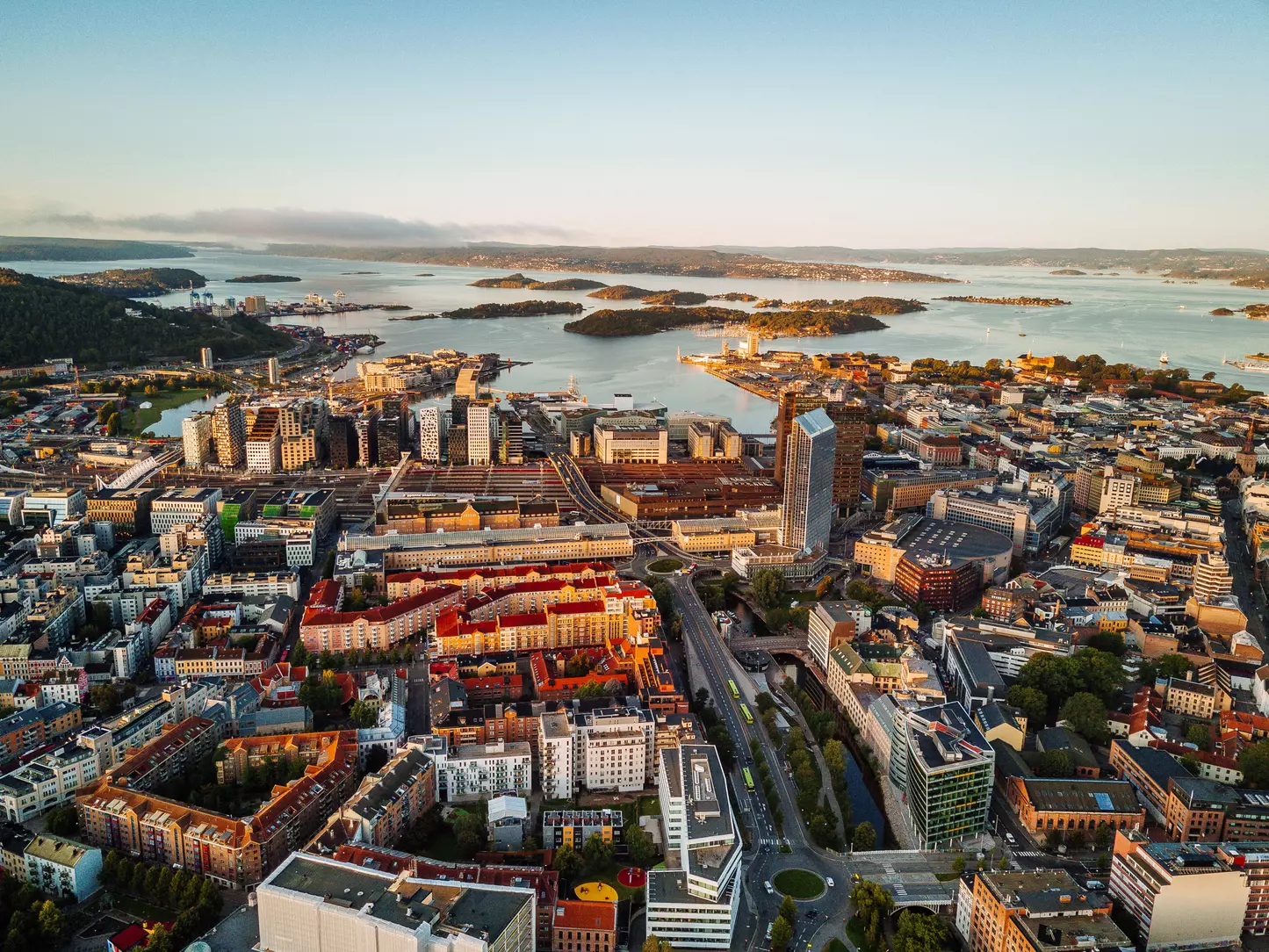Oslo, the capital of Norway, is rated as one of the world’s smartest cities — based on innovative policies in electric mobility, reduction of greenhouse gas emissions, public transport modernization and road safety improvement.
Challenging the fossil fuel status quo
Oslo is an example of how successful innovation demands perseverance, especially when it involves changes in car usage. Step back in time to the 1970s and imagine the sight of a small electric car with a plastic body and a motor from a washing machine on the streets of Oslo. It was a concept car designed by Lars Ringdal, a local entrepreneur. Like many other inventive concepts launched before their time, this one did not succeed, and Ringdal’s company went bankrupt. But his vision of an electric car for the Norwegian market stayed alive.
In the next chapter of Oslo’s electric vehicle (EV) story, a highly publicized road trip in the late 1980s served as a force for change. Morten Harket, a popular entertainer, and Frederic Hauge, an environmentalist, roused public awareness in EVs when they imported and drove an electric car around Oslo while ignoring government policies and refusing to pay for parking or road tolls. Their actions “sparked public and governmental interest and [became a] catalyst for many EV incentives.”
Ringdal’s concept re-emerged in the form of Pivco, a startup which introduced a prototype EV during Norway’s 1994 Olympic Winter Games. Fifteen years later, the company began production of a two-seater EV with a 130-mile range. It was one of a small number of mass-produced EVs in the world.
Anticipating high growth in Norway’s EV adoption, Nissan and other established car companies entered the market, and the Norwegian Electric Vehicle Association (NEVA) urged Oslo’s city council to approve installation of charging infrastructure. By 2011, the city had 400 charging points and installed 300 more in 2014. Leading by example, Oslo replaced its municipal fleet of 1,000 cars with electric vehicles from Mitsubishi, Nissan and Peugeot.
Meanwhile, Oslo searched for ways to make EV ownership a more viable consumer option. The city provided free parking and free charging for EVs in the municipal area and declared EVs exempt from congestion charges. Policy makers went further by allowing EV drivers to use bus lanes and decided to subsidize private construction of charging stations.
These decisions were game changing moves in the local car market. When shopping for a new vehicle in Oslo, customers realized an electric car, with its bundle of incentives, was a compelling alternative to a fossil-fueled vehicle — and Oslo leapfrogged ahead of other cities in EV adoption. Within five years, more than 30% of new cars sold in Oslo’s urban area were electric vehicles or plug-in hybrids, and Oslo was named as “Europe's best electric car city” during an international EV conference.
By 2021, the number of EVs entering Oslo's toll ring exceeded the number of petrol cars, and Oslo’s EV adoption set the pace for the country’s mass market. Christina Bu, NEVA’s secretary general, says 79% of new cars sold in Norway in 2022 were EVs.
Growth and maturity in the EV market inevitably leads to end-of-life battery challenges such as recycling, repair and safe reuse of old batteries plus recovery of valuable materials such as lithium, cobalt and nickel. Ruter AS, Oslo’s public transport authority, is taking steps to meet these challenges by including circular recycling requirements in e-bus tenders.
Setting aggressive targets for emissions and safety
To become a low-carbon city, Oslo developed an ambitious environmental plan with a goal to reduce greenhouse gas (GHG) emissions 95% from 2009 levels by 2030. Promoting electric vehicles, restricting the use of private vehicles, and prohibiting non-resident cars in the city center are part of Oslo’s emissions strategy.
To ensure carbon neutrality in public transport, Oslo created policies for a new subway system, cycling support and acquisition of electric buses. By 2022, the city had an impressive tram network and extensive bike lanes and moved closer to its vision as “the first capital city in the world with an all-electric public transport system." By the end of 2023, Oslo’s last diesel-fueled buses will be replaced with electric models — enabling a zero-emission public transport system five years ahead of schedule.
Investing in public transport innovation and reducing the number of cars on city streets also yields improved road safety. In 2019, Oslo “recorded zero pedestrian or cyclist deaths and only one traffic fatality”. In 2023, the World Economic Forum rated Oslo’s public transport system as 6th best in the world.
Recognizing that heavy-duty vehicles cause 25% of emissions from road traffic and 13% of Oslo’s total emissions, the city council decided to make Oslo a leader in low-emission heavy-duty transport by enabling a transition to vehicles powered by electricity, hydrogen and biogas. To encourage the adoption of heavy duty electric vehicles, the city awarded grants to increase the number of fast chargers for trucks and buses from 2 to 50.
The result of these policies? Oslo’s GHG emissions are 30 percent lower than in 2009, based on calculations from the Norwegian Environment Agency. Because of traffic reductions and a dramatic increase in electric cars and buses, Oslo’s “air quality has improved significantly” said Heidi Sørensen, director of the city’s climate agency, in a TED talk in 2022. “Ten years ago, few would have forecast the [sales of zero emission vehicles] we see today,” she noted.
A lesson learned according to Sørensen: “Don't underestimate how technology changes markets, how fast these changes can happen, and how you can incentivize them by using the right kind of policies.”
